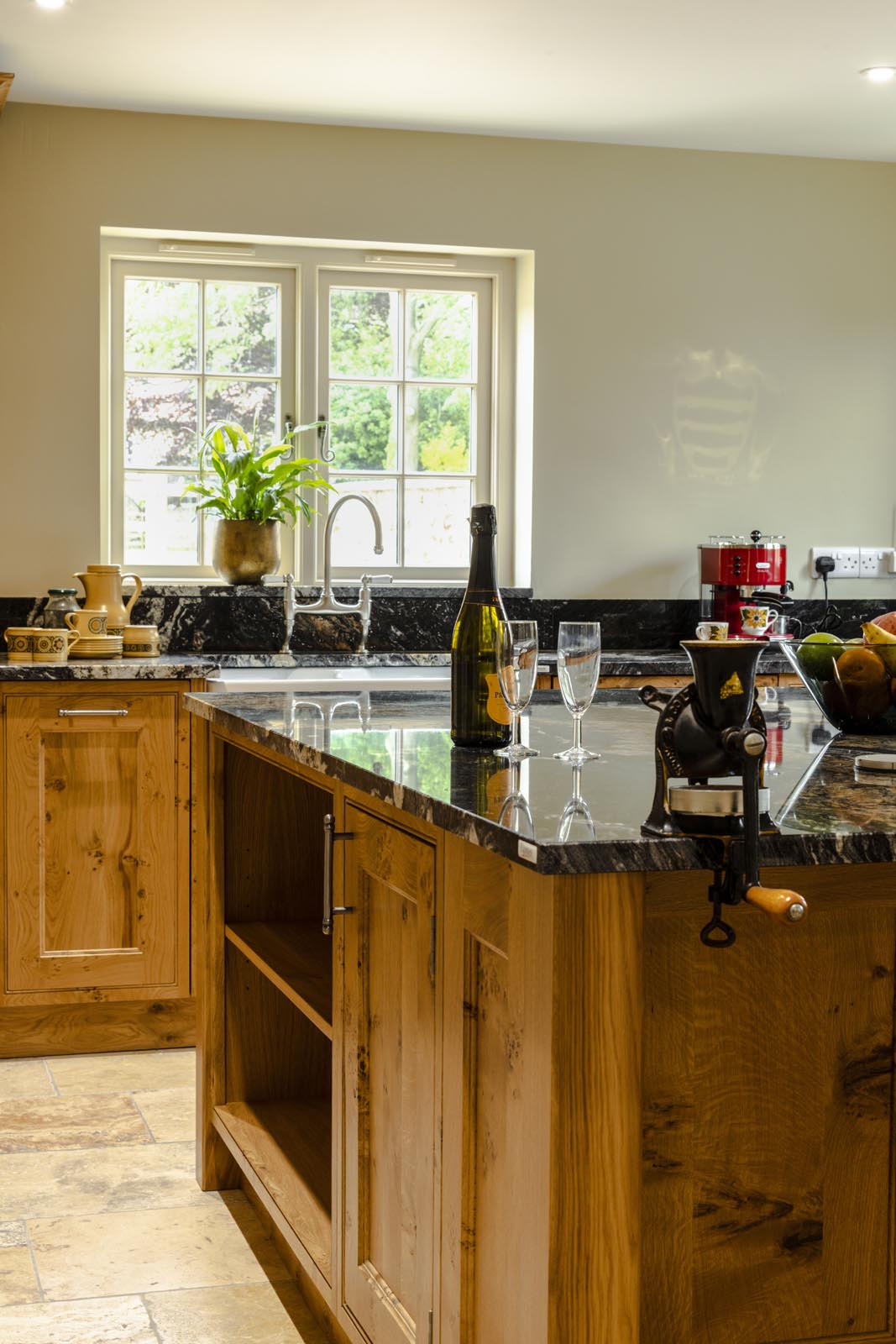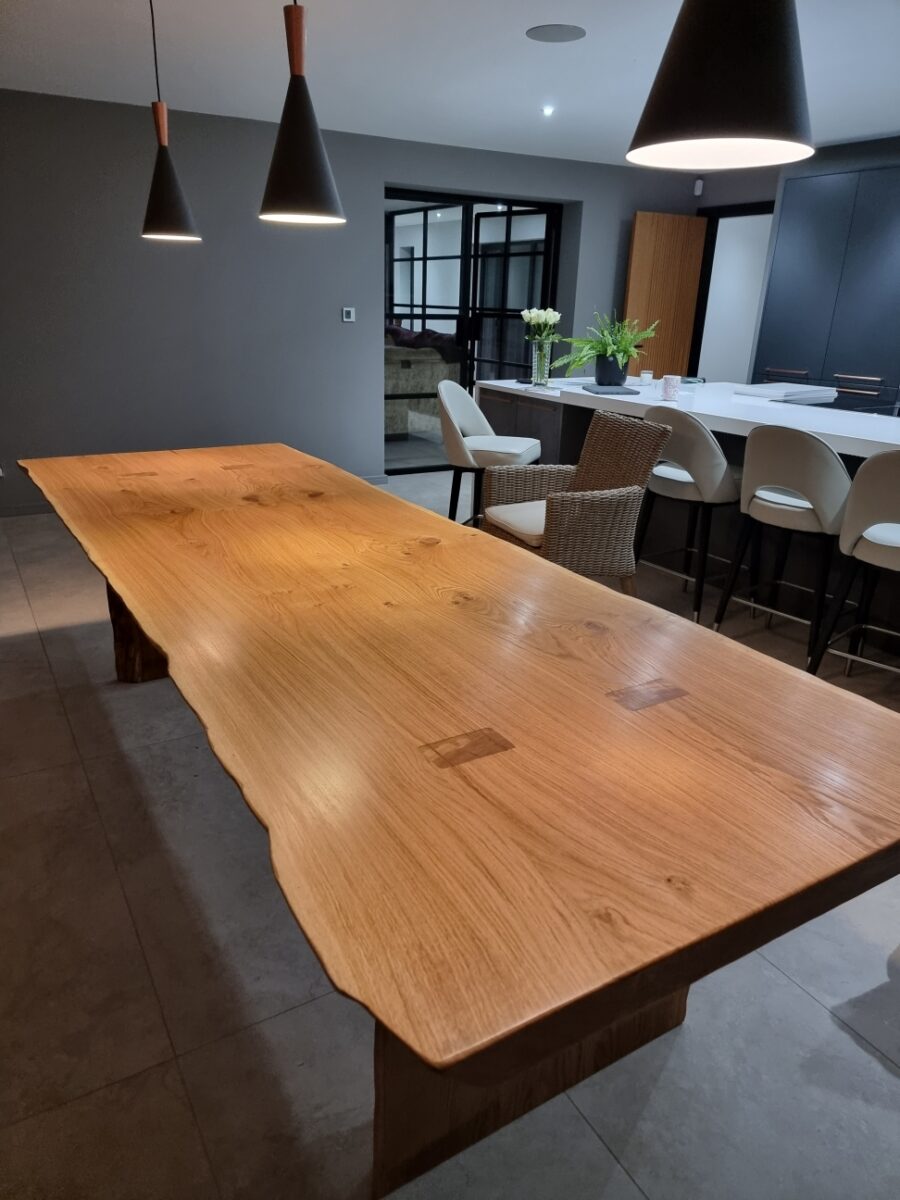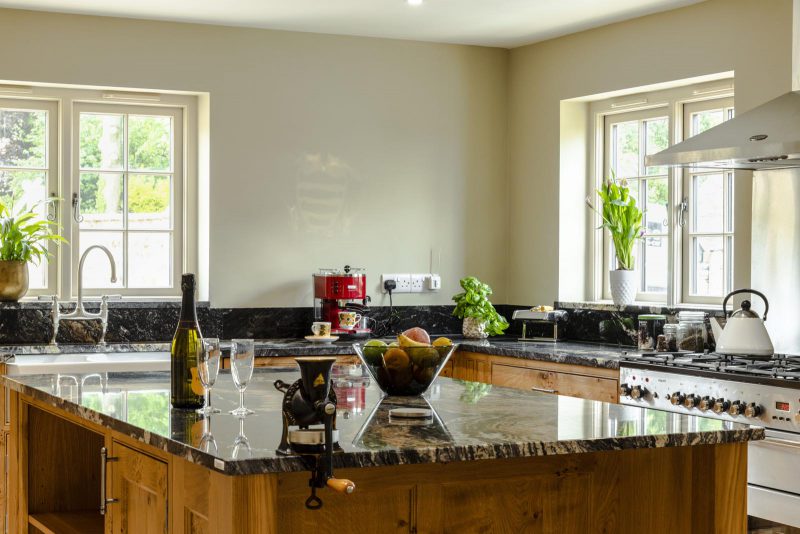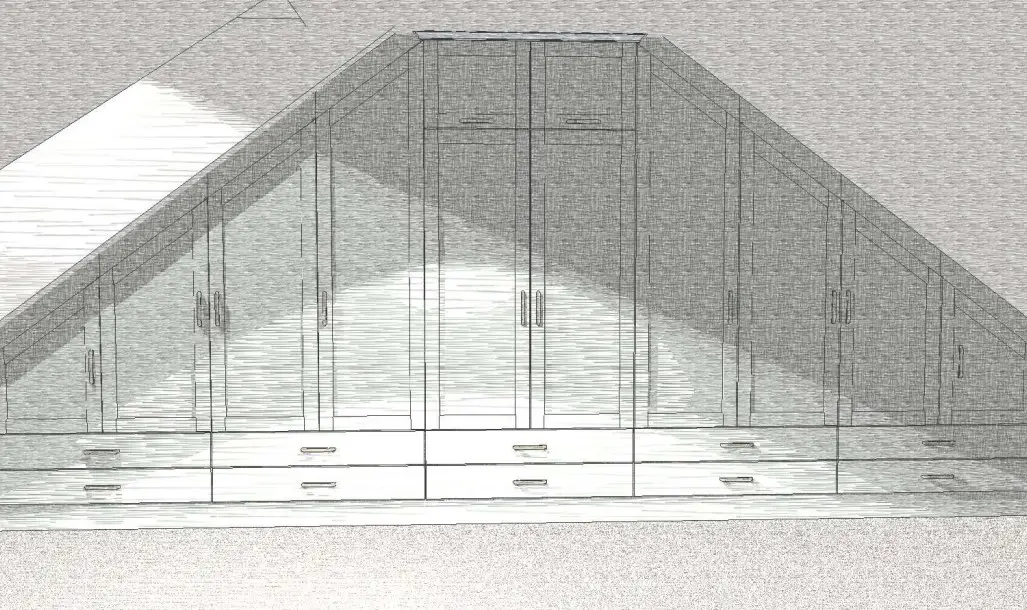Traditional kitchens are the epitome of classic beauty and elegance in interior design. They are appealing not just because of their aesthetics, but because of the feelings and memories they conjure.
Even as modern kitchens have become more prevalent, traditional kitchens are a constant reminder of how the past, present, and future can come together in one beautiful, functional place.
Traditional kitchens have a timeless appeal that transcends generations. Their warmth, charm, and functionality create an inviting and practical space that quickly becomes the perfect centerpiece for your home.
In what ways are traditional kitchens superior to other alternatives? Why are they so special?
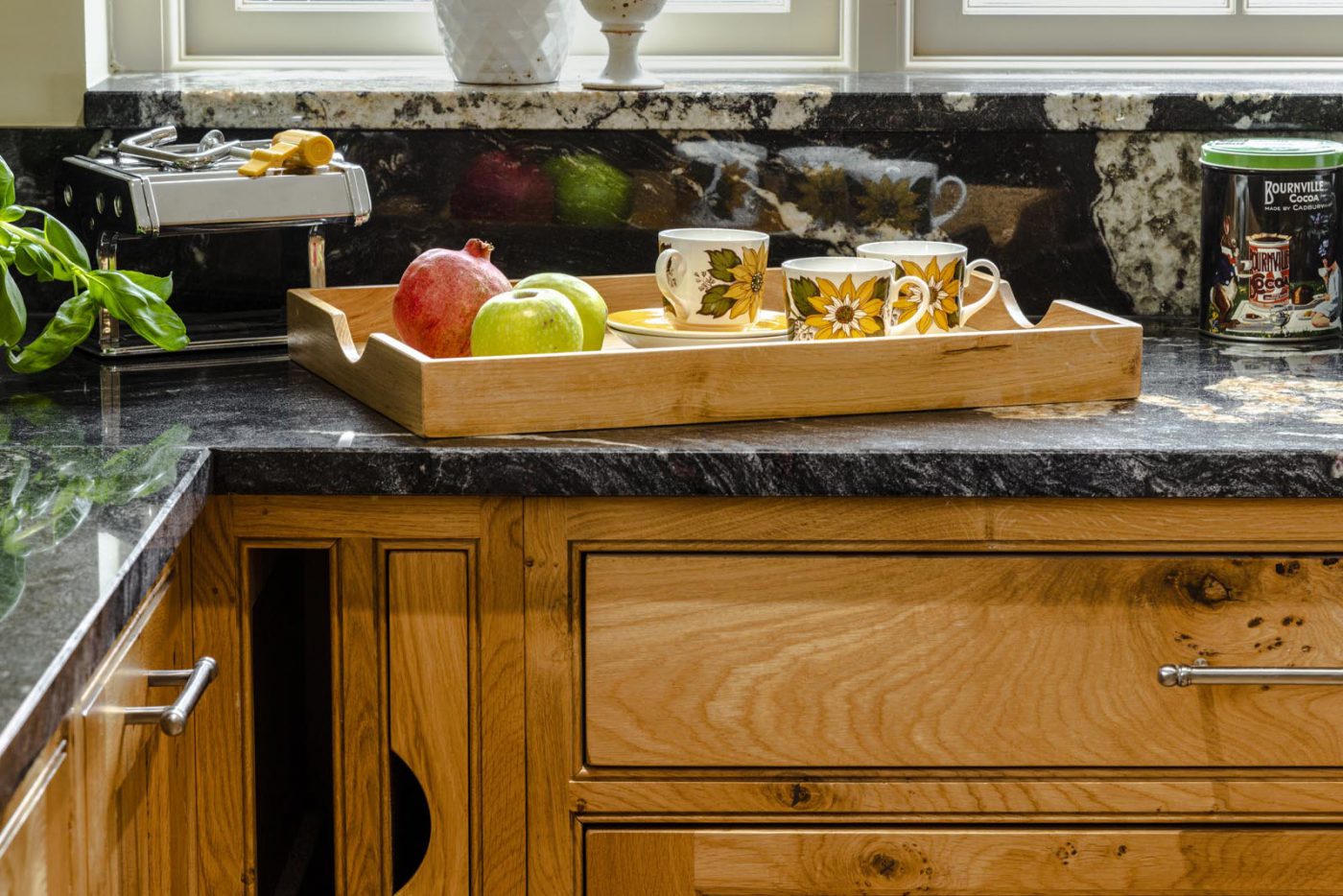
Historical Roots
The traditional kitchens of today have routes that can be traced back centuries.
The earliest kitchens were simply open fires or hearths where food was cooked over an open flame. As time passed, kitchens became more sophisticated, with separate cooking, baking, and storage areas.
In the Middle Ages, kitchens were essential hubs of domestic activity, characterized by a rustic simplicity and functional design. The heart of the medieval kitchen was the central fireplace, serving both as a source of warmth and where spits and cauldrons would be hung above open flames. Tucked away in separate buildings to ward off fire hazards, these kitchens boasted sturdy stone or brick walls topped with thatch or wooden shingles. In larger estates, kitchens were typically located in the basement or ground floor of a castle or manor house. They were often large and dark, with low ceilings and thick stone walls.
The Renaissance brought about several changes in kitchen design. Kitchens became more spacious and well-lit, with large windows and high ceilings. Cookstoves and ovens were introduced, making it easier to prepare food. Kitchens also became more social spaces, with families and guests often gathering in the kitchen to cook and eat together.
The Industrial Revolution saw the introduction of many new technologies that revolutionized kitchen design. Gas stoves, refrigerators, and other appliances made preparing and storing food easier and more efficient. Kitchens also became smaller as families moved into smaller homes in urban areas.
In the 20th century, kitchen design continued to evolve. New materials, such as stainless steel and composites were introduced, and kitchens became more integrated with the rest of the home. Kitchens also became more focused on functionality, with a more efficient use of space and ergonomic design.
Today, traditional kitchens are the first choice for discerning homeowners who appreciate their classic beauty and functionality. They often feature raised-panel cabinetry, marble countertops, and stainless-steel appliances. Typically, they provide a warm and inviting atmosphere, with plenty of natural light and comfortable seating. When you walk into a well-designed traditional kitchen, your first thought shouldn’t be: “This is a nice kitchen, but rather, “This is a room I want to be in”.
Key Design Elements
Several key design elements define traditional kitchens. Let’s discuss them.
Ornate Cabinetry
Traditional kitchen cabinetry is often embellished with decorative moldings, corbels, and other details. Raised-panel doors are a classic feature, adding depth and dimension to the space.
Natural Materials
Hand-selected hardwood, marble, granite, and ceramics are all popular choices for traditional kitchens. These materials add warmth and texture to the space and are extremely durable and easy to maintain. Our pippy oak traditional kitchen showcases a rustic charm by combining these elements.
Antique Hardware
Antique or reproduction hardware is another hallmark of traditional kitchens. Pulls, knobs, brass, copper, or iron hinges add elegance, character and charm.
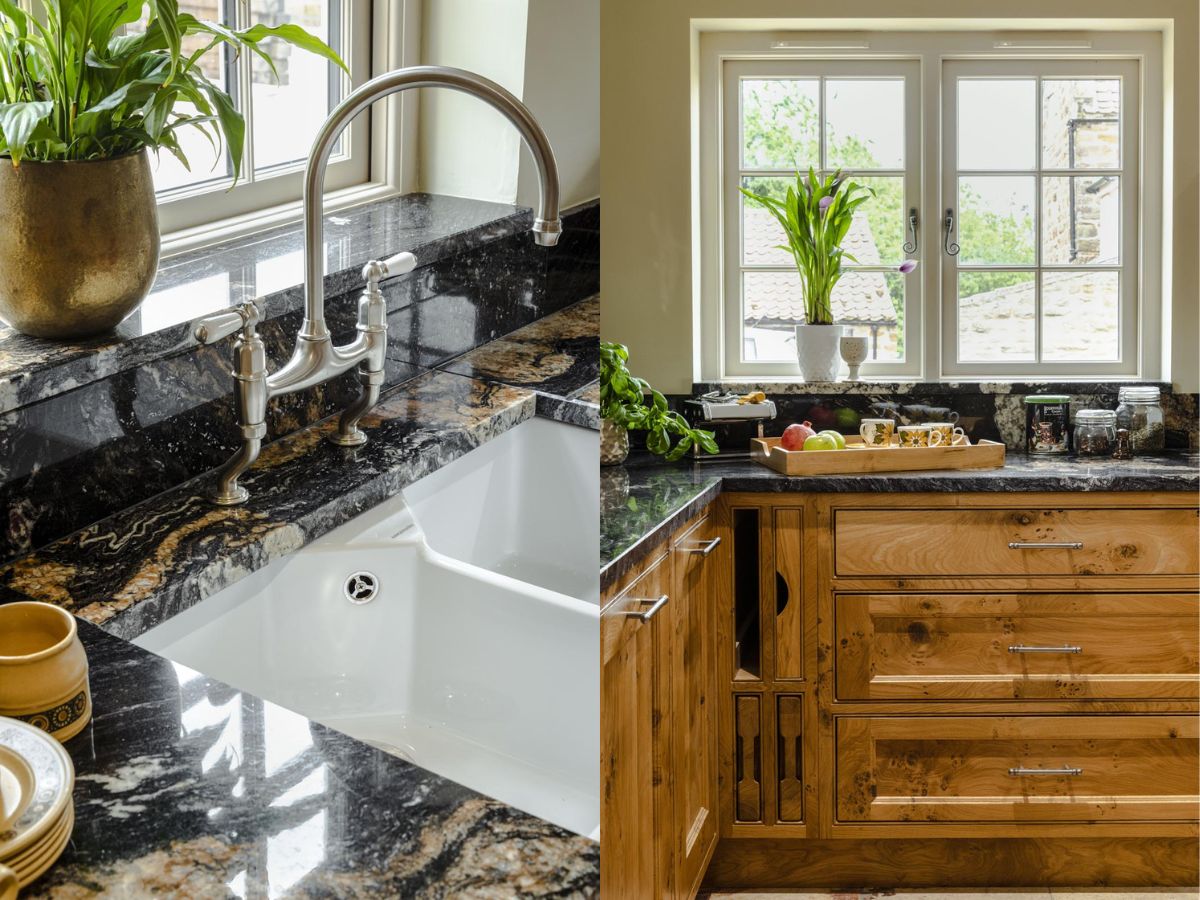
Warm Colors
The color palette of traditional kitchens emphasizes earthy tones and warm hues. Examples include creamy whites, warm beiges, deep browns, and forest greens. These colors create a peaceful, cozy, and inviting atmosphere.
Suited Environments
Traditional kitchens have a timeless design that seamlessly blends with various architectural styles, from quaint cottages to luxurious estates. Features such as raised-panel cabinets, decorative molding, neutral color palettes ensure the kitchen complements the architectural style of the home without appearing dated.
Advantages of a Traditional Kitchen
Timeless Elegance
Traditional kitchens exude a timeless charm that withstands changing design trends. The classic elements, such as ornate cabinetry and raised-panel doors, have a universal appeal that transcends passing trends.
The use of high-quality materials such as hardwoods for cabinetry, natural stone for countertops, and classic tile for flooring, ensure longevity, and an enduring design.
In essence traditional kitchens endure because they strike a balance between timeless aesthetics, functional design, and a sense of emotional connection. This combination allows them to weather changing design trends and remain relevant and appealing over the years.
Warm and Inviting Atmosphere
Traditional kitchens evoke a sense of warmth, familiarity, and comfort. These spaces become more than just a place to prepare food, they are inviting hub for family gatherings and socializing.
Increased Home Value
Traditional kitchens enhance the overall value of a home. The enduring popularity of this style makes it an attractive feature for potential buyers, translating into a solid investment in your property.
Quality Craftsmanship and Durability
Traditional kitchens offer quality craftsmanship and durable materials. Hardwoods like oak, cherry, and maple, along with materials like granite and marble, not only contribute to the aesthetic appeal but also ensure the longevity of the kitchen, standing up to the demands of daily use.
Material Choices
High quality materials are the key to a beautiful kitchen and wood takes center stage. Cabinets, often featuring raised-panel doors, are commonly crafted from hardwoods such as oak, cherry, maple, or mahogany. Wooden beams, flooring, and furniture elements also contribute to the warm and inviting atmosphere.
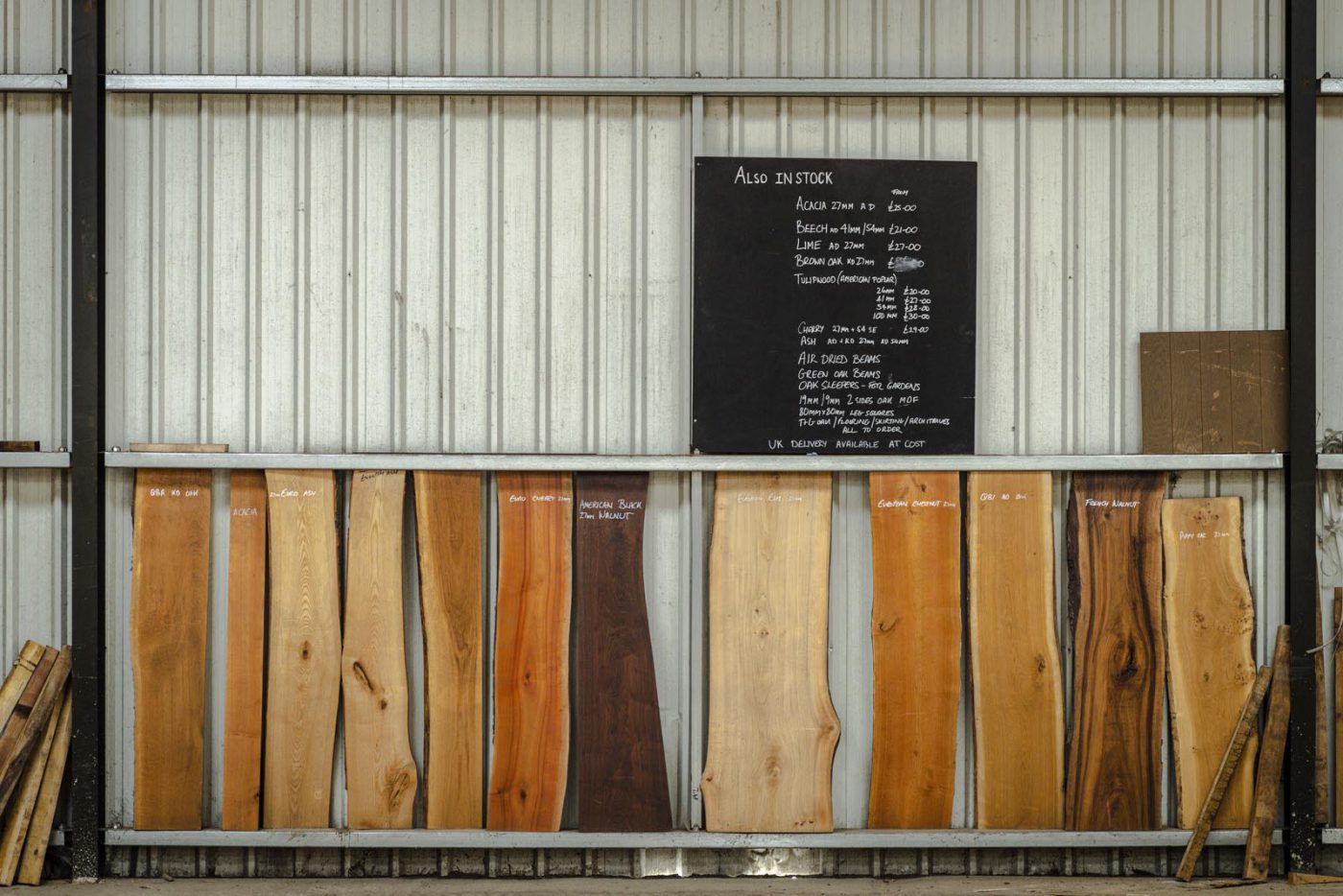
Natural stone surfaces, such as granite or marble, can be used for countertops and backsplashes in traditional kitchens. These materials add an element of luxury and durability to the space.
Other materials that can be used in traditional kitchens include:
Tile
Traditional kitchens often incorporate tile for backsplashes and flooring. Subway tiles, ceramic tiles, and decorative patterns are popular choices. Hand-painted or patterned tiles can add flair and individuality to the design.
Brick
Exposed brick accent walls or brick backsplashes can be a perfect feature of traditional kitchens, especially those with a rustic or country flair. Brick adds texture and warmth to the space. Its rustic charm and historic associations contribute to a sense of authenticity and character.
Balancing Tradition with Modern Living
Balancing classic design elements and modern functionality in a traditional kitchen is genuinely possible. Here are a few tips for how to do that:
- Choose appliances that fit perfectly with the style of your kitchen. There are many modern appliances available that have a traditional look. Panel-ready appliances can be integrated into cabinetry for a seamless design.
- Incorporate hidden storage solutions. It will help you keep your kitchen clutter-free and organized.
- Use modern technology to update your kitchen. For example, you can install a smart refrigerator or a touchless faucet.
Nostalgia and Family Connection
Traditional kitchens conjure feelings of nostalgia and family connection for many reasons. They are often enjoyed and used by various generations, becoming cherished heirlooms that hold the memories of shared meals and laughter. The enduring design of traditional kitchens fosters a sense of continuity and family tradition.
We are transported to a simpler time and place when we enter a traditional kitchen. The warm, inviting atmosphere is reminiscent of family gatherings and holiday celebrations. Traditional kitchens’ familiar sights and smells evoke a sense of comfort and belonging.
The layout of traditional kitchens also contributes to their sense of deeper and stronger family connection. The work triangle positions the sink, stove, and refrigerator close to each other and encourages family members to interact and collaborate while preparing meals. The spacious countertops and dining tables provide ample room for families to gather and enjoy meals together.
In addition to their functional design, traditional kitchens are often decorated with personal touches such as family photos, heirloom recipes, and other cherished items. These personal touches create a sense of warmth and familiarity, making the kitchen a place where everyone can feel truly at home.


